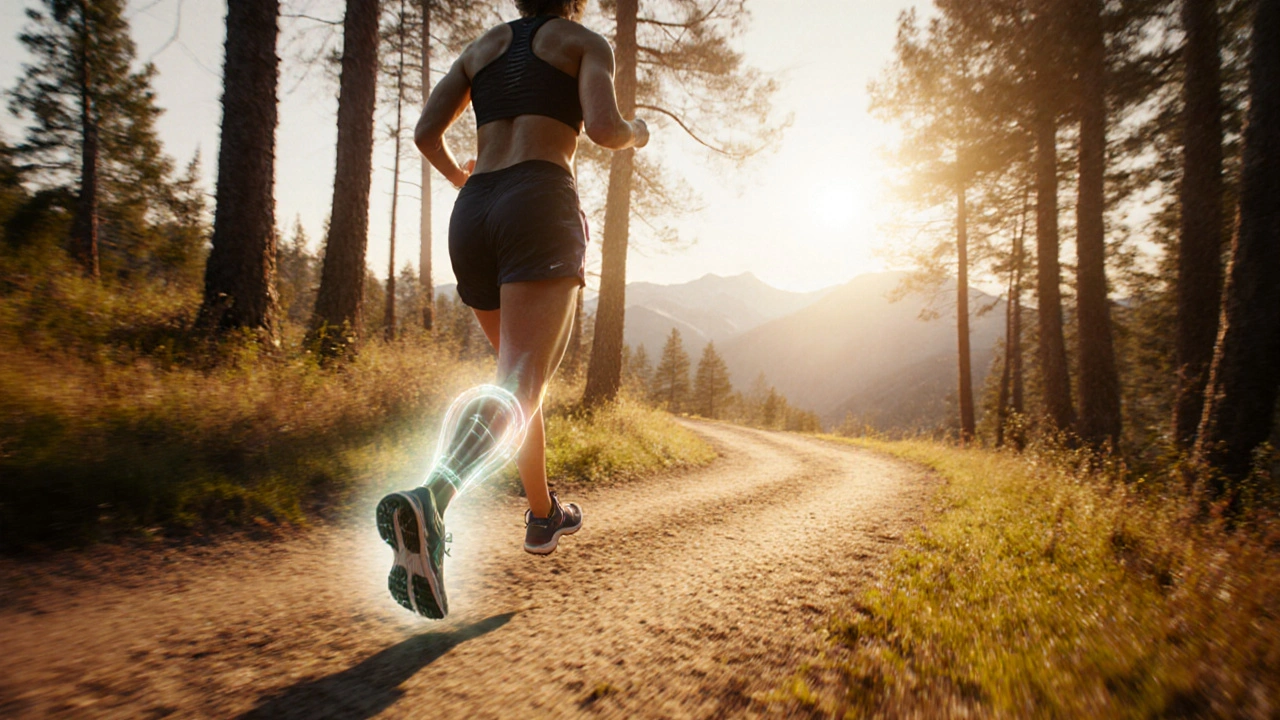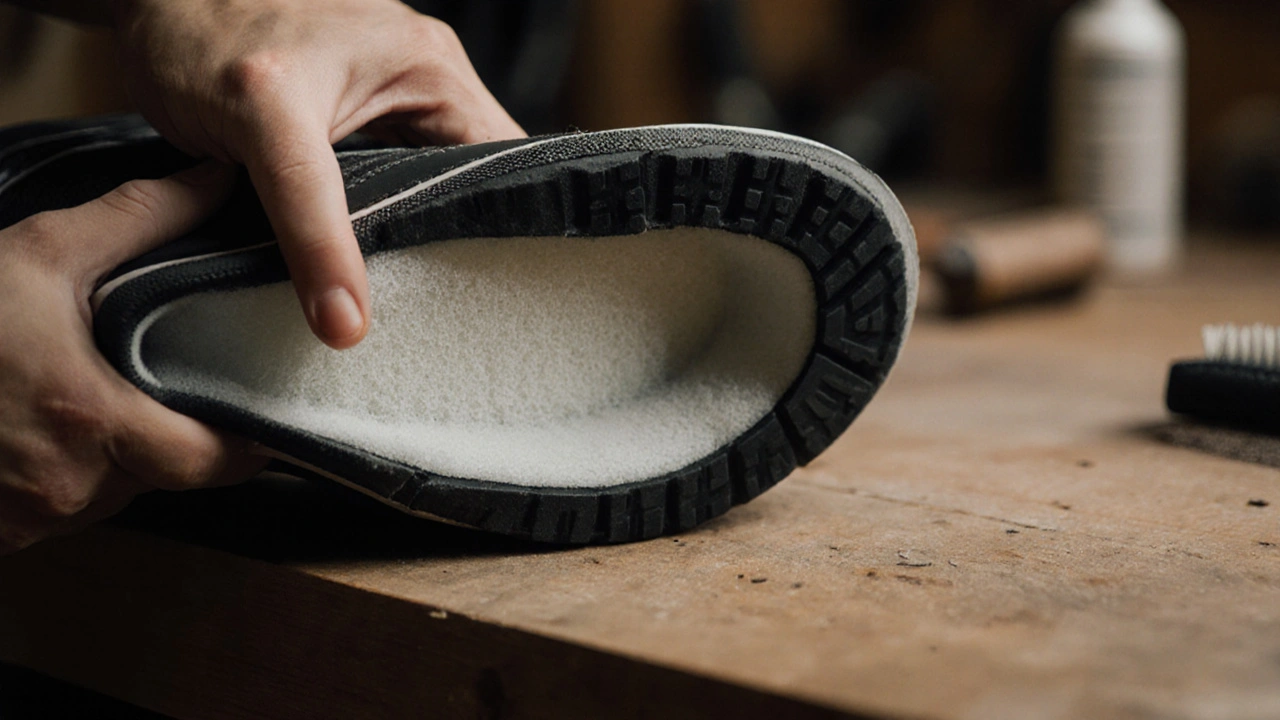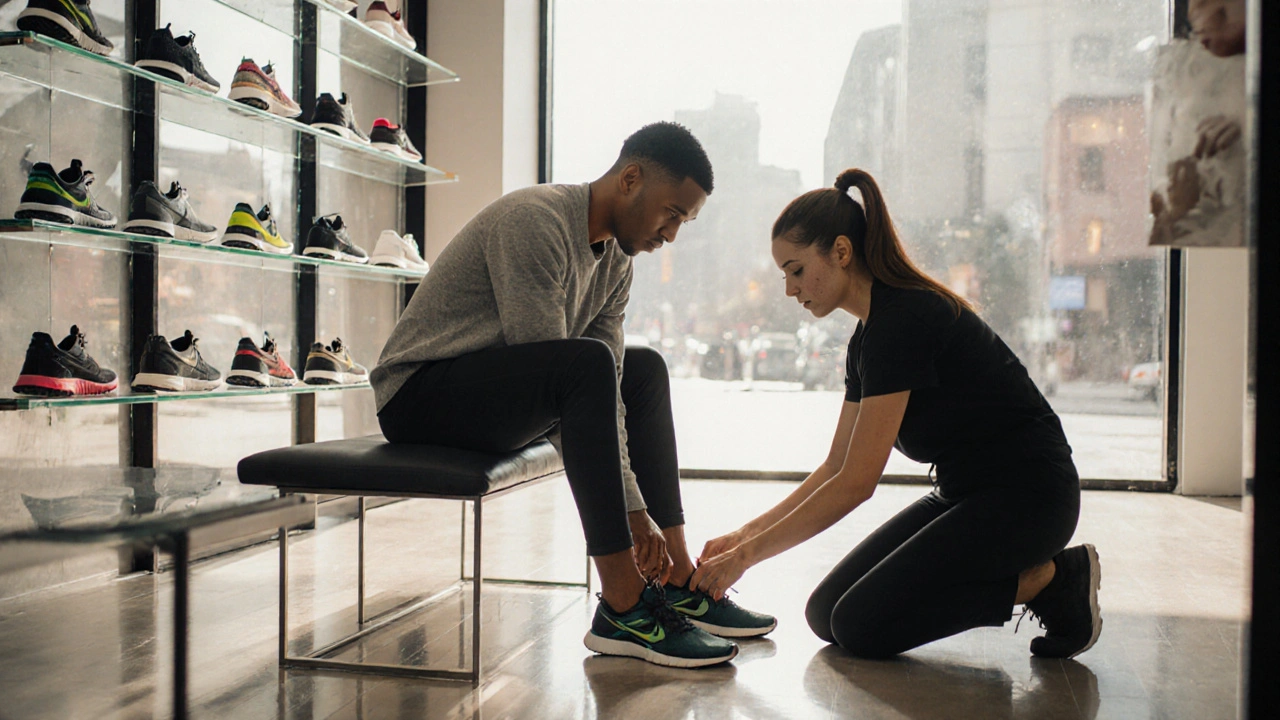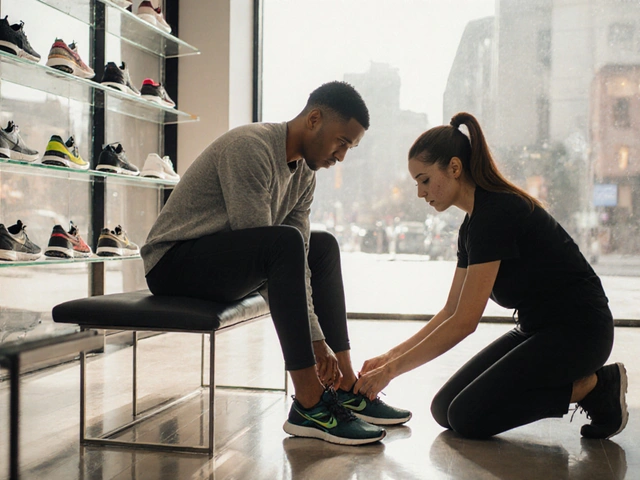Finding the right pair of shoes isn’t just about looking good-it’s a critical step toward protecting your joints and staying pain‑free. Below you’ll get a clear roadmap for picking footwear that shields hips, knees, and ankles, whether you’re a casual walker or a marathon‑training enthusiast.
Quick Take
- Prioritize arch support and cushioning; they absorb impact and keep joints aligned.
- Choose a heel height below 1 inch for everyday wear.
- Fit matters: leave a thumb’s width at the toe box and check for a snug mid‑foot.
- Match shoe type to activity-running shoes for runs, stability shoes for lateral moves.
- Replace shoes every 300‑500 miles or when cushioning feels flat.
Footwear Footwear is any type of shoe or boot designed to protect your feet and support your body while you move plays a silent but powerful role in joint health. Poorly designed shoes can force your Joint A joint is a connection between two bones that allows movement and bears weight to work harder, accelerating wear and tear. The good news? By focusing on a handful of key features, you can dramatically lower the risk of arthritis, tendinitis, and chronic knee pain.
Why Shoes Matter for Your Joints
Every step you take transfers forces through your foot, up the leg, and into the hip and spine. When a shoe provides proper Arch Support Arch support is the structural reinforcement that maintains the natural curve of the foot’s arch and enough Cushioning Cushioning refers to the material layers that absorb impact during foot strike, those forces are spread out and softened. Without that distribution, impact concentrates on the knee joint’s cartilage and the hip’s ball‑and‑socket, speeding up degeneration.
Studies from the American Orthopaedic Society (2023) show that people who wear shoes with inadequate support are 30% more likely to develop knee osteoarthritis over a ten‑year period. The same research points out that a modest increase in heel height-just an extra half inch-can shift load from the heel to the forefoot, increasing stress on the metatarsophalangeal joints.
Key Footwear Features That Protect Joints
- Arch Support - Look for shoes with a firm mid‑sole that follows the foot’s natural arch shape. If you have flat feet, a built‑in arch or a removable orthotic insert can keep the foot from rolling inward (overpronation), which otherwise forces the knee inward.
- Cushioning - EVA foam, PU gel, and proprietary air‑unit technologies all work to buffer impact. For joint protection, aim for a cushioning density that returns to its original shape after each step; a “soft” feel that compresses fully can actually increase loading later in the stride.
- Heel Height - Keep everyday heels below 1 inch (2.5cm). Higher heels tilt the pelvis, altering gait and over‑loading the lower back and knees.
- Mid‑Foot Stability - A well‑designed heel counter (the stiff back part of the shoe) locks the heel in place, reducing excessive rolling and protecting the ankle joint.
- Outsole Flexibility - The forefoot should bend where your toes naturally flex, while the heel remains firm. This balance supports a smooth roll‑through and avoids sudden jarring moments that can irritate the patellofemoral joint.
- Shoe Width & Toe Box - A roomy toe box prevents the toes from being squeezed, which can cause bunions and alter the gait pattern, indirectly stressing the knees.
Matching Footwear to Your Activity
Not all shoes are created equal. Choosing the right type for the activity you’re planning is as essential as the shoe’s internal structure.
| Footwear Type | Arch Support | Cushioning Level | Ideal Activities | Joint Protection Score* |
|---|---|---|---|---|
| Running Shoe A lightweight shoe with enhanced cushioning and flexible forefoot, designed for forward motion | Moderate‑to‑high (built‑in or removable) | High (dual‑density EVA) | Road running, jogging, treadmill | 9/10 |
| Stability Shoe A shoe with medial posts to limit overpronation, offering extra side‑support | High (structured) | Medium‑high | Trail running, cross‑training | 9/10 |
| Walking Shoe A shoe with a slightly elevated heel and a flexible forefoot for natural gait | Moderate | Medium | Daily walking, light hikes | 8/10 |
| Dress Shoe A formal shoe often with a sleek silhouette and minimal cushioning | Low‑to‑moderate | Low | Office, events | 5/10 |
| Sandals Open‑toe footwear, usually with a thin sole and straps | Low | Low | Casual summer wear | 4/10 |
*Score reflects how well the shoe’s design mitigates joint‑loading forces, based on biomechanical testing from the Journal of Sports Science (2024).

How to Test Shoes Before Buying
- Measure both feet at the end of the day; the larger foot dictates the size. Use a Shoe Size The indicated foot length and width measured in standardized units (US, EU, UK) chart from the retailer.
- Check the toe box: slide your pinky toe sideways. If it brushes the side, the shoe is too narrow.
- Do the “heel‑to‑ground” test. Press the heel firmly into the floor; the shoe should stay stable without wobbling.
- Perform a flex test. Place your forefoot near the ball of the shoe and gently bend. The shoe should flex at the ball‑of‑foot but stay rigid at the heel.
- Walk on a smooth surface. Pay attention to any hot spots, slippage, or a feeling that your foot is “sinking.”
- If you use custom inserts, bring them along. The shoe should accommodate the orthotic without crushing it.
Common Pitfalls & Myths
Even seasoned walkers fall for a few myths that sabotage joint health.
- Myth: “If it’s cheap, it’s fine.” Budget shoes often skimp on arch support and high‑density cushioning, leading to premature wear on the knee joint.
- Myth: “High heels make you look taller, so they’re worth the risk.” Every extra half‑inch adds measurable torque to the knee and places extra pressure on the forefoot.
- Myth: “Break‑in periods eliminate the need for proper fit.” No amount of wear can fix a shoe that’s too narrow or lacks a stable heel counter.
Maintenance & Replacement Tips
Good shoes degrade over time, even if they still look okay.
- Track mileage. For running and high‑impact shoes, replace after 300‑500 miles (≈480‑800km).
- Inspect the mid‑sole. Visible creases, compression, or a “spongy” feel indicate loss of cushioning.
- Rotate pairs. Having two shoes for the same activity gives each time to decompress and extends lifespan.
- Store in a cool, dry place. Excess heat can break down foam, while humidity weakens adhesives.
Quick Reference Checklist
- Heel height≤1inch.
- Arch support=firm yet comfortable.
- Cushioning density=medium‑high for daily wear.
- Toe box=room for pinky toe wiggle.
- Mid‑foot stability=locked heel counter.
- Replace after 300‑500miles or when cushioning feels flat.

Frequently Asked Questions
Can I wear regular sneakers for hiking?
Regular sneakers lack the aggressive tread and ankle support needed for uneven terrain, which can increase the risk of ankle sprains and force the knee to compensate. For day‑hikes, opt for a lightweight hiking shoe with a rock‑plate and sturdy mid‑foot stability.
Do orthotics replace the need for arch support?
Orthotics enhance support but they work best when the shoe already provides a solid base. Pairing custom inserts with a shoe that has built‑in arch structure ensures the joint‑loading forces stay evenly distributed.
Is there a perfect shoe for people with arthritis?
No single shoe cures arthritis, but those with full‑foot cushioning, a wide toe box, and low heel height reduce stress on inflamed joints. Look for models marketed as “arthritis‑friendly” or ask a podiatrist for recommendations.
How often should I replace my work shoes?
If you stand or walk more than 6hours a day, swap them out every 6‑12months, or sooner if you notice the mid‑sole compressing or the outsole wearing down.
Are high‑heeled boots any better than stilettos for joint health?
Both raise the heel, but a modest block heel (around 0.75inch) spreads weight more evenly than a narrow stilettos. Still, the safest bet for joint preservation is to keep heel height low overall.







Write a comment
Your email address will be restricted to us